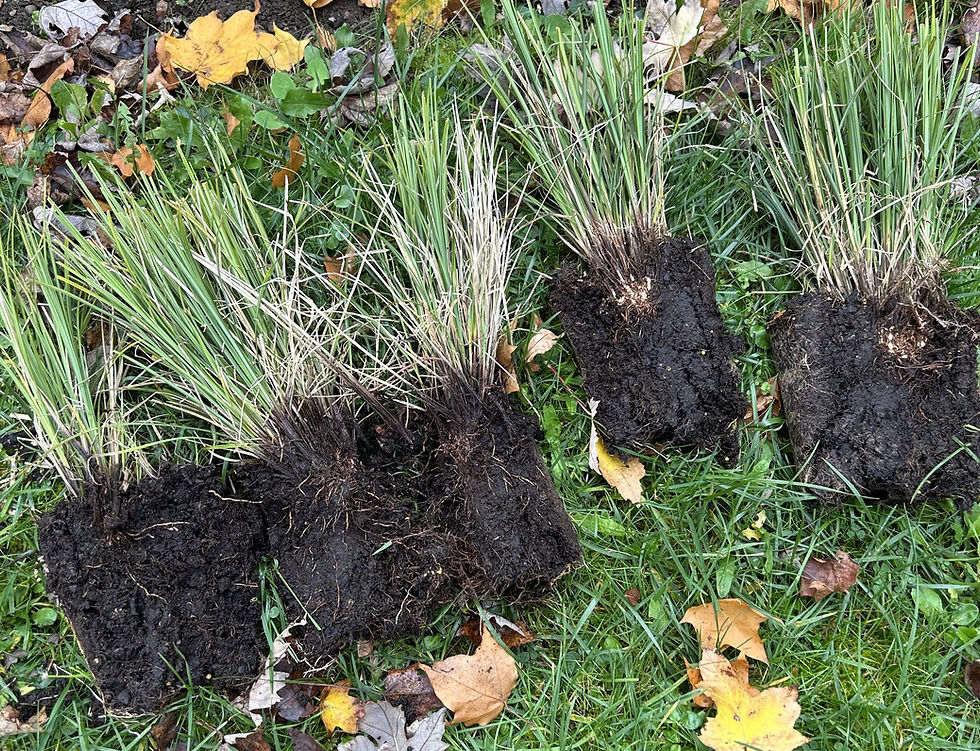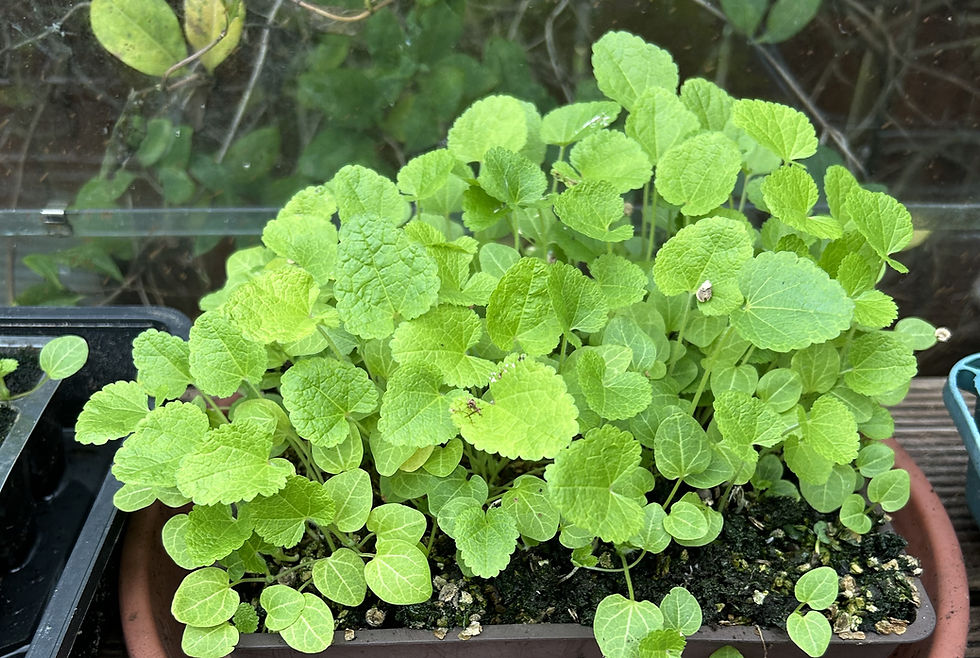Invite wildflowers to your garden
- patrickwiltshire3
- Jul 22, 2023
- 4 min read

As a gardener in East Yorkshire I love to incorporate wildflowers into the gardens I work for. They tick a ton of boxes, which I’ll outline below, but mainly I love what they offer visually and the appreciative feeling they give me. Let me explain.
Wildflowers are versatile and beautiful and there’s a place for them in all outdoor spaces whether you’re a gardener that likes everything in its place or prefer to be more laissez-faire in your approach. Summer's an excellent time of year to see what wildflowers offer.
Here’s just some of the things they do with aplomb!:
Feed bees, butterflies and other pollinating insects

Not only do they look good, they play an enormous role in keeping pollinating insects busy and satisfied. If wildflowers bring your garden alive with their colours, pollinating insects like bees, hoverflies, butterflies and moths enliven your garden with their animated antics.
Put on a display of bold colours through the summer
What’s your favourite colour or colour combinations? Wildflowers offer colours throughout the whole spectrum, from vibrant red to the deepest of purples.
Collectively they look elegant and not unlike a painting by Monet I’d say with their dabs of bright colours in lipstick-reds, electric blues and vibrant oranges. Here’s a list of flowers that incorporate many of the colours we love.
RED: Field poppy
ORANGE: Californian poppy,
YELLOW: Wild mustard, Welsh poppy
GREEN: Tobacco plant ‘Lime Green’
BLUE: Cornflower, buddleya
PURPLE: Corncockle
WHITE: Ox-eye daisy
Offer a display of different heights giving your garden that extra dimension

Wildflowers are pretty when they creep along the ground or when they tower high to the sky.
By choosing wildflower mixes that offer flowers of all heights you’re sure to get an exciting display where your eye is always on the move to focus on flowers at the ground, at waist-height and even at eye-level and upwards!
WILDFLOWERS UP TO 30cm high: forget-me-not, lungwort, wild strawberry, Welsh poppies
WILDFLOWERS 30cm-1m high: feverfew, love-in-a-mist, tobacco plant, field poppies
WILDFLOWERS OVER 1m high: granny’s bonnet, Canterbury bells, foxgloves, buddleya
Make great cut flowers if you fancy their seeing their impact in your own home
Wildflowers look beautiful in the garden but I for one, hanker after seeing them in my house. This is where effective vase displays come into play. You might have a dozen red roses for a vase which will look lovely; but if you cut and add some stems of say, cow parsley your roses will look more against the delicate white flower heads.
HOW TO START OFF A WILDFLOWER AREA

Directly sowing wildflower seeds in the flowerbed often has mixed results for me so I like to start off wildflower areas using the following method.
In April or May I like to sow wildflowers from seed in rows in their own nursery bed. I sow them in rows so I can see which desired wildflowers I’ve sown on purpose. (It’s unlikely that other seedlings popping up outside the rows are the ones you’ve planned to sow for your garden. You can discount them as weeds or indeed incorporate them into your wildflower plan.)
After a few days to up to two weeks most of your wildflower seeds will have germinated- (turned into baby plants). As the seedlings grow they will start to jostle and vie for space a bit like when there’s less room in the back of the car for your kids as they’re growing too fast. Just like the kids start to row about elbows digging into sides, these seedlings will be competing over space, water and light unless you uproot them carefully and give them more space in your nursery bed.
Over the next two weeks your seedlings will be growing in earnest and becoming healthy young plants. Be sure to water them each day if we’re having a period of dry weather. Equally check they’re not waterlogged when we’re subjected to on-going downpours. (If this is the case, have a horticultural fleece (a bit like a thin bedsheet but for plants) at hand to stretch over the seedlings/young plants to keep off the majority of the rain).
On a nice day (doing this on a rainy day is just too miserable!) uproot your plants again and put them in position in their final place where you want your wildflower meadow or area to be.
HOW TO MANAGE A WILDFLOWER AREA

If you’re designating a part of your lawn or beds to wildflowers, enjoy their displays in summer and then allow the flower heads to turn to seeds.
Tap the seed heads to let the seed fall onto the ground and in autumn mow or cut the stems with a scythe. (Think Grim Reaper). If you haven’t a scythe and can get on your knees, a pair of shears will do the trick.
I use the lawn mower option (in the interests of time more than anything) but don’t attach the lawn bag at the back. I leave the seeds, seed heads and stems to rot down for a week or so then collect the debris.
When I collect the debris I keep an eye on the seed heads and see that the seeds are left on the ground. I rake them in and leave the seeds to it for the next generation the following year.



